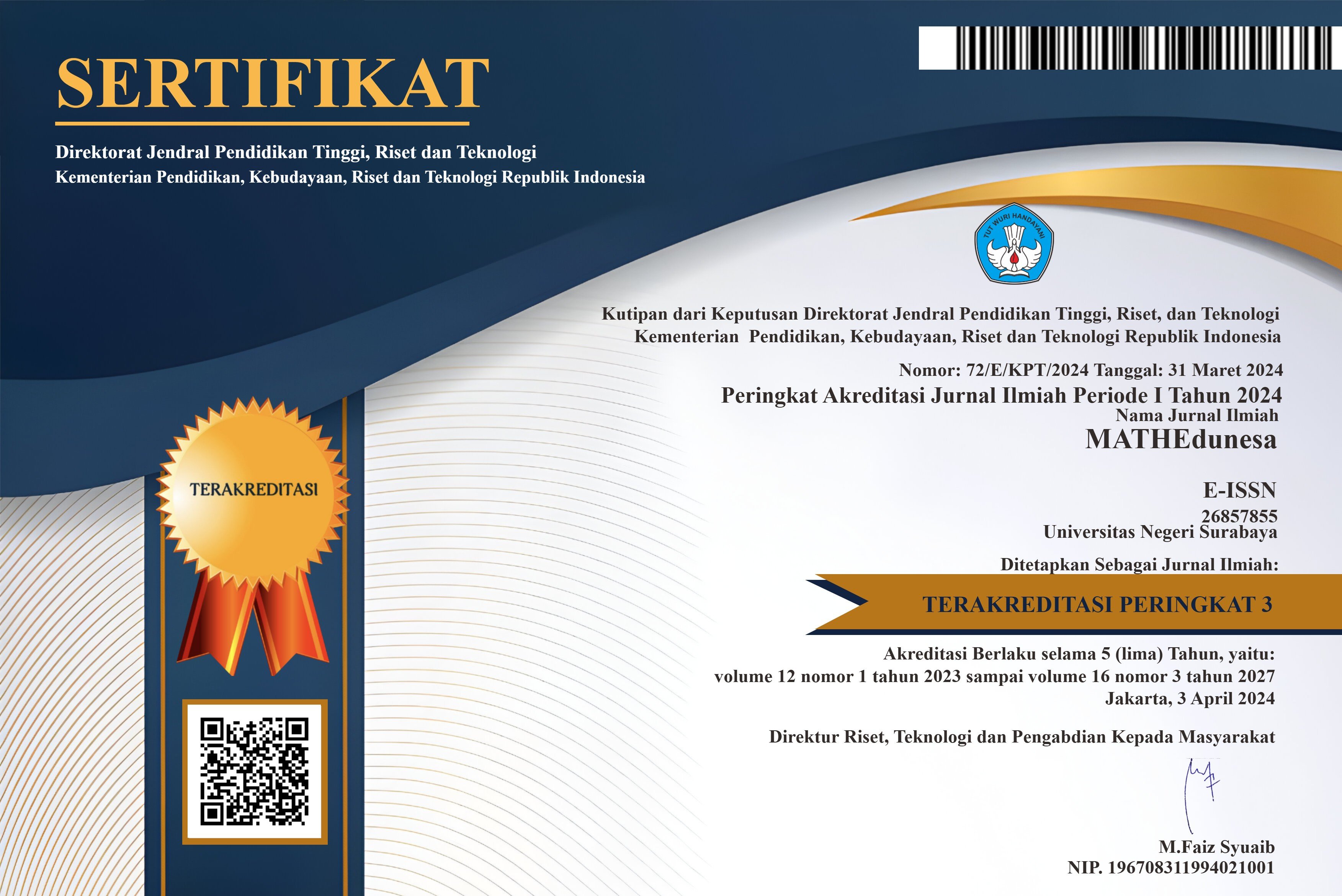PERILAKU PEMECAHAN MASALAH SISWA DALAM MENYELESAIKAN MASALAH MATEMATIKA KONTEKSTUAL DITINJAU DARI KECEMASAN MATEMATIKA
DOI:
https://doi.org/10.26740/mathedunesa.v9n1.p145-154Abstract
Problem solving behavior make further information about behavior of students to understand contextual mathematical problems and their solutions. The different behaviors shown by students to each other shows how to steps, abilities, and understanding of students in solving contextual mathematical problems. It is important for students and teachers to know the problem solving behaviors in order to improve understanding and ability to solve contextual mathematical problems. Mathematics anxiety can influence students in soling mathematical problems. Given the importance of students problem solving behavior in learning mathematics, teachers need to know students problem solving behavior in solving contextual mathematical problems based on mathematics anxiety. This study investigate problem solving behavior of students with low and high mathematical anxiety in solving contextual mathematical problems. Subjects in this study were four students of Junior High School, consists each of the two students from each mathematics anxiety group, low and high. Four students were given contextual mathematical problem solving test to investigate about problem solving behavior. Classification of students mathematics anxiety levels is determined through the mathematics anxiety questionnaire score of each student. The results of this research showed that students problem solving behavior with high mathematics anxiety were categorized in Direct Translation Approach-proficient (DTA-p) dan Direct Translation Approach-not proficient (DTA-np) category. Students behavior with low mathematics anxiety were categorized in the category of Meaning Based Approach-justification (MBA-j). The difference in problem solving behavior from two categories of mathematics anxiety is in re-reading the problem, linking concepts, deciding strategies, using context in calculations and final answer, and providing an explanation at each step of the solution. Students problem solving behavior with low mathematics anxiety was better than students problem solving behavior with high mathematics anxiety.Downloads
Download data is not yet available.
Downloads
Published
2020-06-28
Issue
Section
Psychology
 Abstract views: 168
,
Abstract views: 168
, PDF Downloads: 231
PDF Downloads: 231




